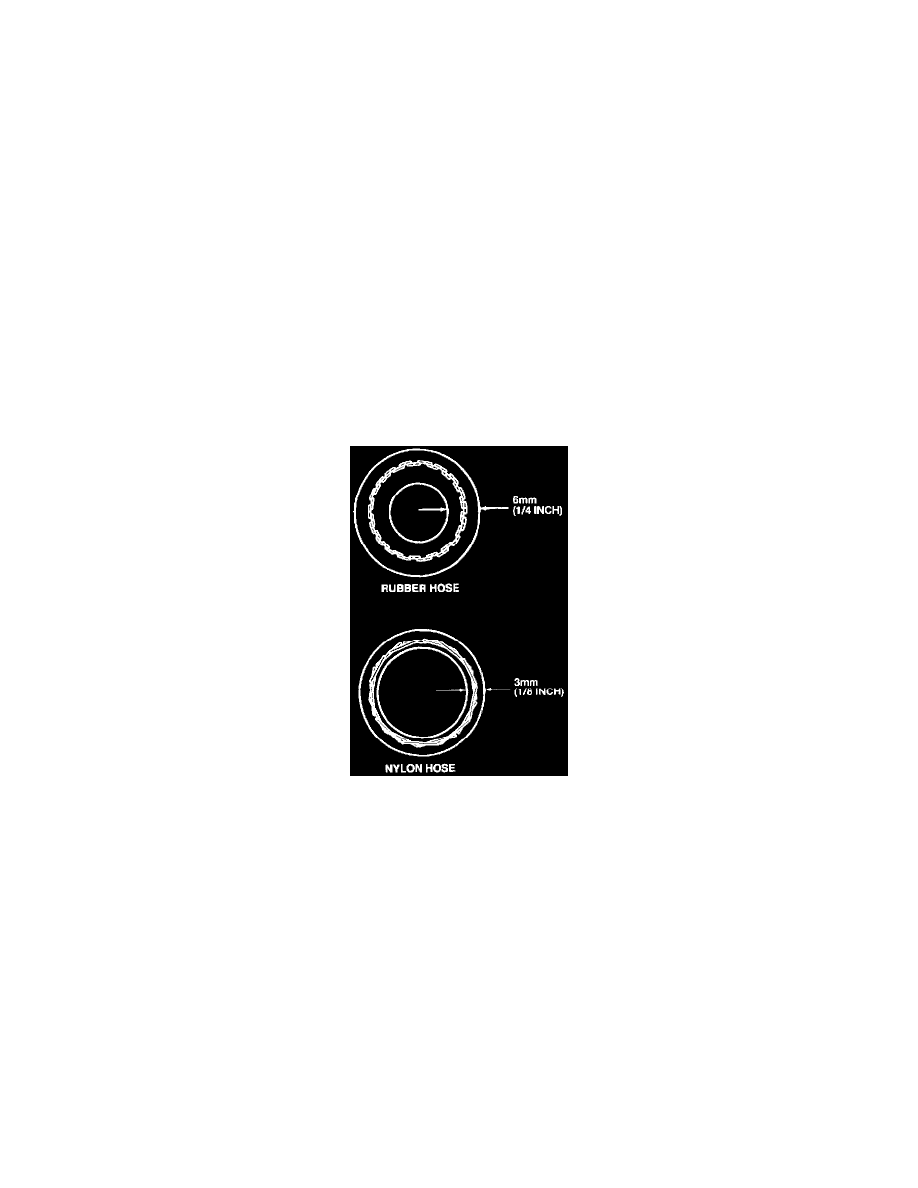Escort L4-110 1.8L DOHC (1994)

Refrigerant: Service and Repair
A/C SYSTEM FILTERING
Two A/C service kits have been released to provide the necessary equipment and information to perform the A/C system filtering procedure. Filter
kits with the service part number suffix "A" are to be used on vehicles that have a nylon lined suction hose between the A/C dehydrator and
receiver tank and the A/C compressor. Filter kits with the service part number suffix "B" are for vehicles with a rubber lined suction hose.
CAUTION: Follow all refrigerant system safety and service precautions as outlined.
1. To determine that the A/C compressor has failed and must be replaced, remove the A/C evaporator core orifice and liquid line, if necessary.
Look for a dirty A/C evaporator core orifice and/or a liquid line containing black refrigerant oil and particles.
2. Remove the damaged A/C compressor and drain the oil into a calibrated container.
NOTE: The proper amount of refrigerant oil must be added to the new A/C compressor before it can be installed.
NOTE: It will be necessary to transfer the magnetic A/C clutch from the old A/C compressor to the new A/C compressor.
3. Install the new A/C compressor. Be sure the A/C compressor mounting bolts are tightened to the proper specification. Check the tension of the
drive belt.
4. Remove the suction accumulator/drier and drain the oil into a calibrated container.
5. Add clean refrigerant oil to the new suction accumulator/drier in the same amount that was removed from the old unit, plus an additional 60ml
(2 oz) of new refrigerant oil.
6. Install the suction accumulator/drier in the vehicle.
7. Determine the type of suction hose with which you are working. To do this, cut the suction hose into two pieces (make the cut closer to the
A/C compressor than the A/C dehydrator and receiver tank) and measure the hose wall thickness. Rubber lined hose has a wall thickness of 1/4
inch and nylon lined hose has a wall thickness of 1/8 inch.
